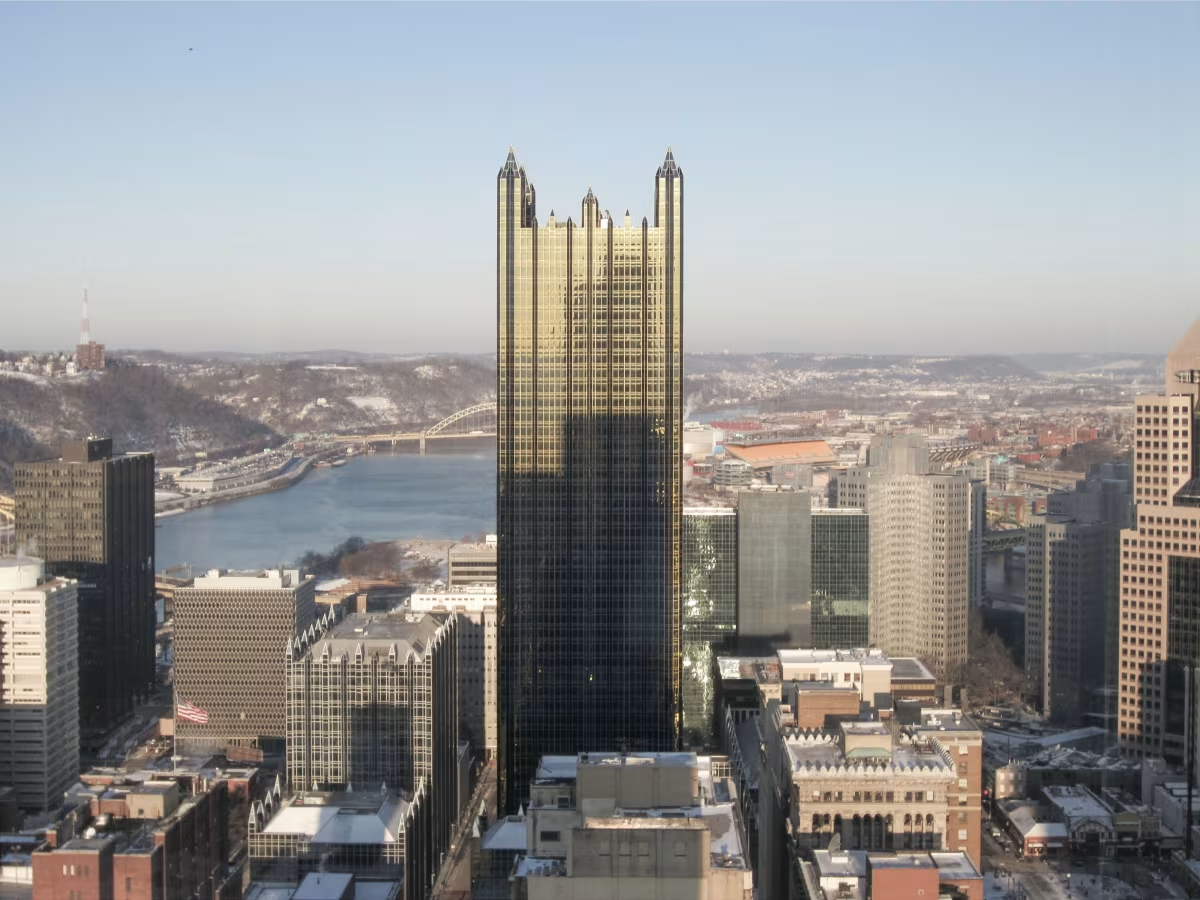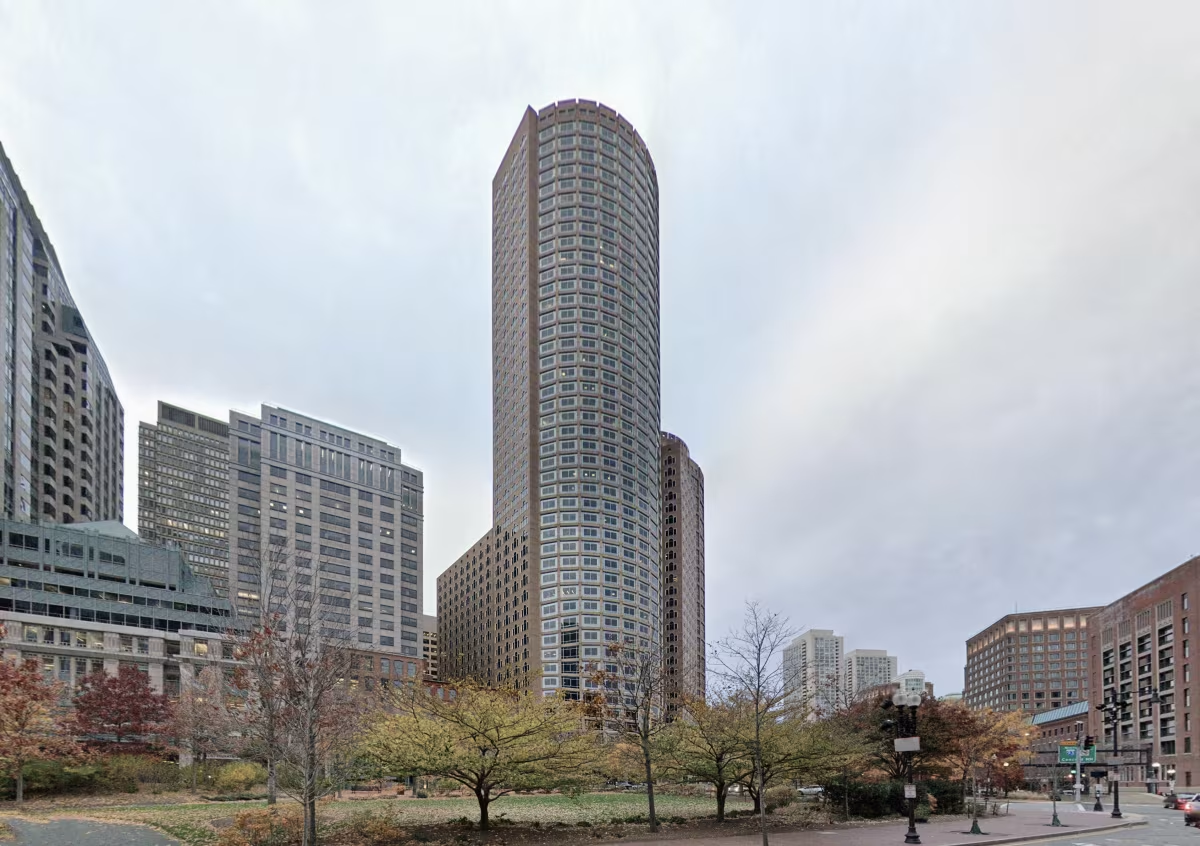One PPG Place vs One International Place Building


Comparing the One PPG Place and the One International Place Building is an interesting exercise, because even though they are located in different cities (Pittsburgh, PA and Boston, MA), both were designed by Johnson/Burgee Architects and finished within within 3 years of each other. This gives us the chance to see how the same architect's ideas were expressed in different urban contexts almost simultaneously.
Height & Size
These two towers present an interesting contrast in their proportions. The One PPG Place rises higher at 636ft (194m), while the One International Place Building reaches 600ft (183m). However, the One International Place Building accommodates more floors with 46 levels above ground, compared to 40 floors in the One PPG Place.
This suggests different approaches to interior space design. The One PPG Place has an average floor-to-floor height of approximately 4.9m, while the One International Place Building has more compact floors averaging around 4m each. The taller building's more generous floor heights might indicate grander interior spaces, higher ceilings, or different programmatic requirements.
These different proportions likely reflect the specific needs each building was designed to serve, whether driven by zoning regulations, client requirements, or the intended use of the spaces within. The contrast shows how architects can achieve different spatial experiences even when working with similar overall building scales.
Architectural Style
Both the One PPG Place and the One International Place Building were designed in line with the aesthetic conventions of the Postmodernism style.
At the time, this style was at the height of its popularity. So Johnson/Burgee Architects followed what was in many ways expected at the time, producing designs that fit comfortably within contemporary architectural norms rather, than breaking with convention.
Uses
Both the One PPG Place and the One International Place Building were designed to serve as commercial towers, and that has remained their main use since their completion, serving similar roles in the urban fabric.
Both towers provide significant parking capacity, with One PPG Place offering 700 spaces and the One International Place Building offering 400.
Structure & Facade
Both towers share the same structural solution, a Frame system.
A frame structure uses a grid of columns and beams to carry the building's loads. This frees the walls from structural duties, allowing for flexible floor plans and larger windows.
However, when it comes to the facade, both buildings use different approaches. The One PPG Place uses a Curtain Wall facade, while the One International Place Building uses a Window Wall facade.
A Curtain Wall facade like the one seen in the One PPG Place uses a lightweight glass curtain wall hung from the structure, while a window-wall facade like the one seen in the One International Place Building uses panels fitted between floor slabs, leaving slab edges visible.
| One PPG Place | One International Place Building | |
|---|---|---|
| Johnson/Burgee Architects | Architect | Johnson/Burgee Architects |
| 1984 | Year Completed | 1987 |
| Postmodernism | Architectural Style | Postmodernism |
| Commercial | Current Use | Commercial |
| 40 | Floors Above Ground | 46 |
| 194 m | Height (m) | 183 m |
| 21 | Number of Elevators | 6 |
| Frame | Structure Type | Frame |
| Steel | Vertical Structure Material | Steel |
| Reinforced Concrete | Horizontal Structure Material | Reinforced Concrete |
| No | Facade Structural? | Yes |
| Glass, Aluminum | Main Facade Material | Glass, Granite |
| PPG Industries | Developer | The Chiofaro Company |
| Robertson, Fowler & Associates P.C. | Structural Engineer | McNamara . Salvia |
| PA | State | MA |
| Pittsburgh | City | Boston |
| 101 125 Third Avenue | Address | 100 Oliver Street |